Chapter 3: Graphing
3.4 Graphing Linear Equations
There are two common procedures that are used to draw the line represented by a linear equation. The first one is called the slope-intercept method and involves using the slope and intercept given in the equation.
If the equation is given in the form ![]() , then
, then ![]() gives the rise over run value and the value
gives the rise over run value and the value ![]() gives the point where the line crosses the
gives the point where the line crosses the ![]() -axis, also known as the
-axis, also known as the ![]() -intercept.
-intercept.
Example 3.4.1
Given the following equations, identify the slope and the ![]() -intercept.
-intercept.
When graphing a linear equation using the slope-intercept method, start by using the value given for the ![]() -intercept. After this point is marked, then identify other points using the slope.
-intercept. After this point is marked, then identify other points using the slope.
This is shown in the following example.
Example 3.4.2
Graph the equation ![]() .
.
First, place a dot on the ![]() -intercept,
-intercept, ![]() , which is placed on the coordinate
, which is placed on the coordinate ![]()
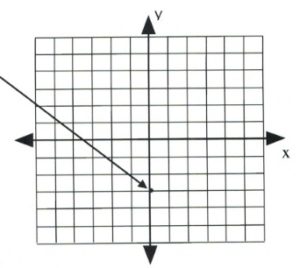
Now, place the next dot using the slope of 2.
A slope of 2 means that the line rises 2 for every 1 across.
Simply, ![]() is the same as
is the same as ![]() , where
, where ![]() and
and ![]() .
.
Placing these points on the graph becomes a simple counting exercise, which is done as follows:

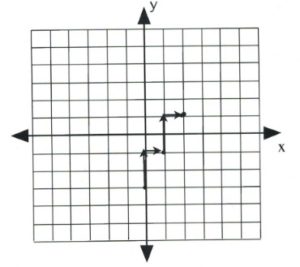
Once several dots have been drawn, draw a line through them, like so:
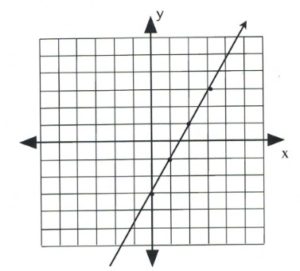
Note that dots can also be drawn in the reverse of what has been drawn here.
Slope is 2 when rise over run is ![]() or
or ![]() , which would be drawn as follows:
, which would be drawn as follows:
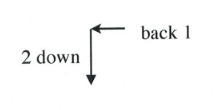
Example 3.4.3
Graph the equation ![]() .
.
First, place a dot on the ![]() -intercept,
-intercept, ![]() .
.
Now, place the dots according to the slope, ![]() .
.
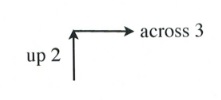
This will generate the following set of dots on the graph. All that remains is to draw a line through the dots.

The second method of drawing lines represented by linear equations and functions is to identify the two intercepts of the linear equation. Specifically, find ![]() when
when ![]() and find
and find ![]() when
when ![]() .
.
Example 3.4.4
Graph the equation ![]() .
.
To find the first coordinate, choose ![]() .
.
This yields:
![]()
Coordinate is ![]() .
.
Now choose ![]() .
.
This yields:
![Rendered by QuickLaTeX.com \[\begin{array}{llrll} 2x&+&0&=&6 \\ &&2x&=&6 \\ &&x&=&\frac{6}{2} \text{ or } 3 \end{array}\]](https://pressbooks.bccampus.ca/intermediatealgebrakpu/wp-content/ql-cache/quicklatex.com-5799ec59a0e6fe939c122a3c91a25fad_l3.png)
Coordinate is ![]() .
.
Draw these coordinates on the graph and draw a line through them.
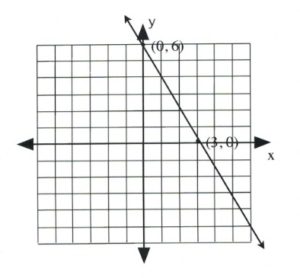
Example 3.4.5
Graph the equation ![]() .
.
To find the first coordinate, choose ![]() .
.
This yields:
![]()
Coordinate is ![]() .
.
Now choose ![]() .
.
This yields:
![]()
Coordinate is ![]() .
.
Draw these coordinates on the graph and draw a line through them.
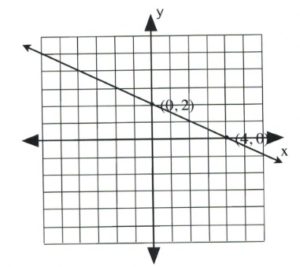
Example 3.4.6
Graph the equation ![]() .
.
To find the first coordinate, choose ![]() .
.
This yields:
![]()
Coordinate is ![]() .
.
Since the intercept is ![]() , finding the other intercept yields the same coordinate. In this case, choose any value of convenience.
, finding the other intercept yields the same coordinate. In this case, choose any value of convenience.
Choose ![]() .
.
This yields:
![Rendered by QuickLaTeX.com \[\begin{array}{rlrlr} 2(2)&+&y&=&0 \\ 4&+&y&=&0 \\ -4&&&&-4 \\ \midrule &&y&=&-4 \end{array}\]](https://pressbooks.bccampus.ca/intermediatealgebrakpu/wp-content/ql-cache/quicklatex.com-d6abb0dbbb83271a6291c68b06111656_l3.png)
Coordinate is ![]() .
.
Draw these coordinates on the graph and draw a line through them.
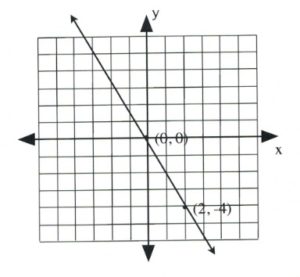
Questions
For questions 1 to 10, sketch each linear equation using the slope-intercept method.
For questions 11 to 20, sketch each linear equation using the ![]() and
and ![]() -intercepts.
-intercepts.
For questions 21 to 28, sketch each linear equation using any method.
For questions 29 to 40, reduce and sketch each linear equation using any method.

